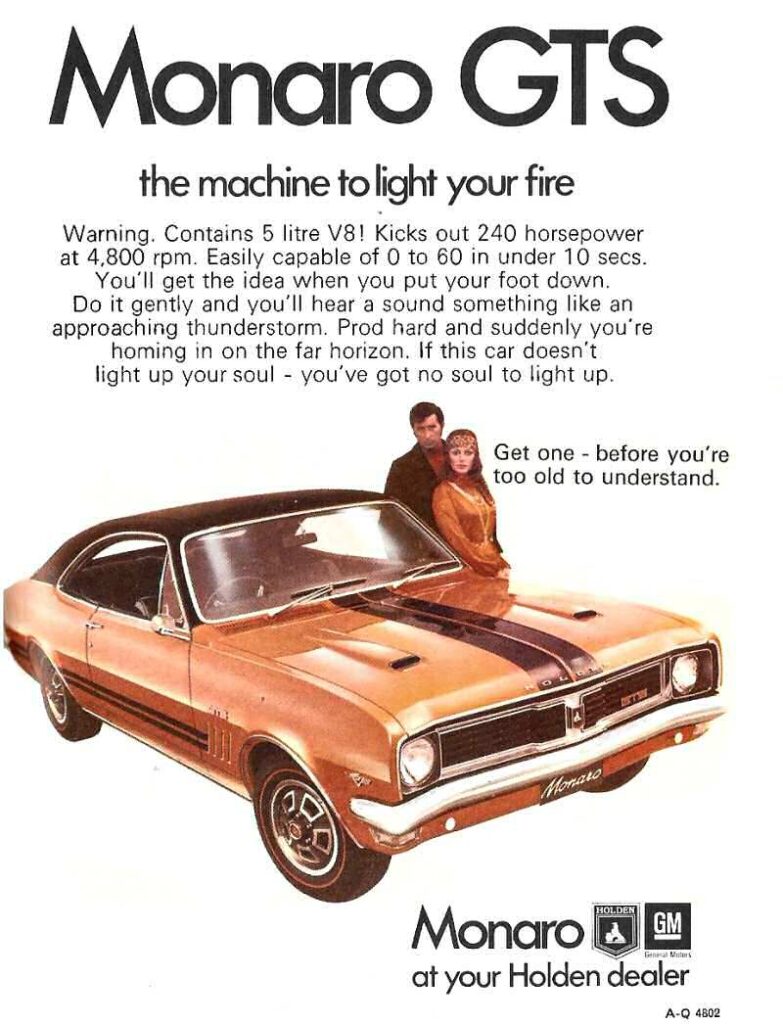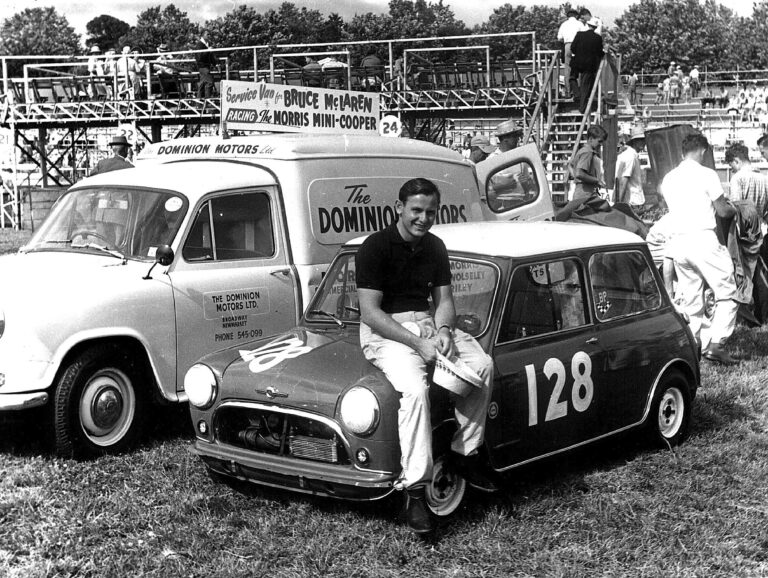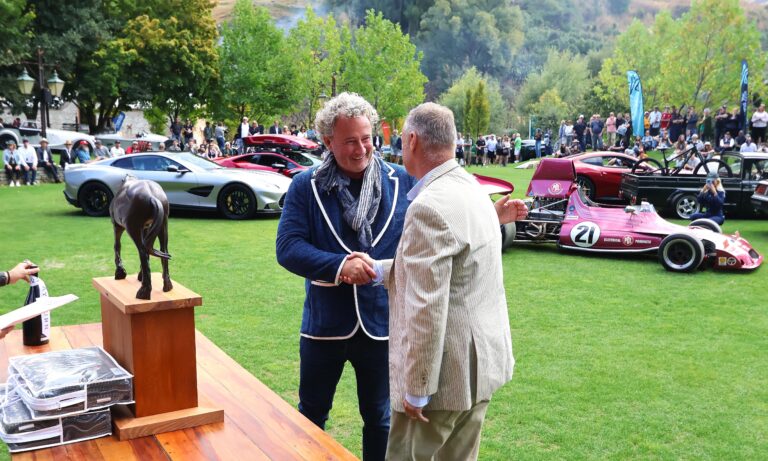For many Kiwi petrolheads, there can be few more satisfying moments than slipping behind the wheel of a classic Aussie or American muscle car and turning the key to hear a well-sorted V8 settle into idle — especially if it recalls a Bathurst champion
By Quinton Taylor
Photographs: Quinton Taylor and Derek Ayson
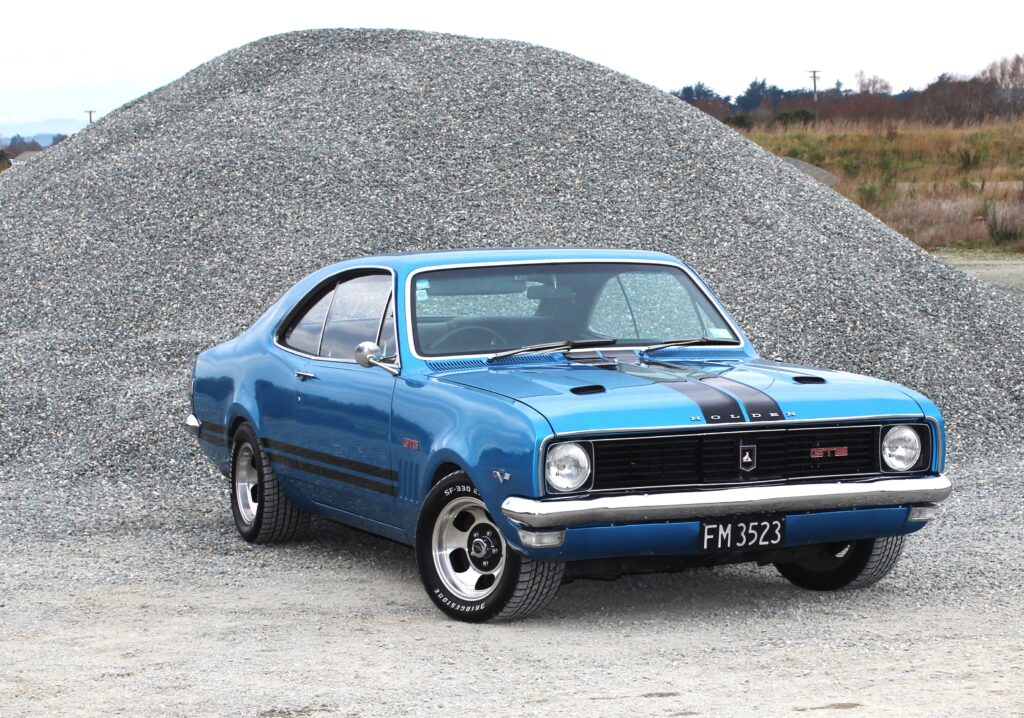
Derek and Rachel Ayson enjoy cruising southern highways to the easy loping beat of their 1970 Holden HT GTS350 Holden Monaro. Powered by Chevrolet’s popular 350 cu. in. V8, the motor has found favour in many restomod classic cars and developed a great reputation for reliability and satisfying performance.
The car it powers was originally a factory-built GTS in white with a blue interior, fitted with Holden’s 186 cu. in. six. Derek bought it in 2007 from good friends Russell and Catherine Harrex of Dunedin. During the mid 1990s the Harrexes had had the car stripped to bare metal. Jeff Marshall Panel Repairs tidied it up and it was resprayed at Grant Findlater Auto Painters, in Balclutha.
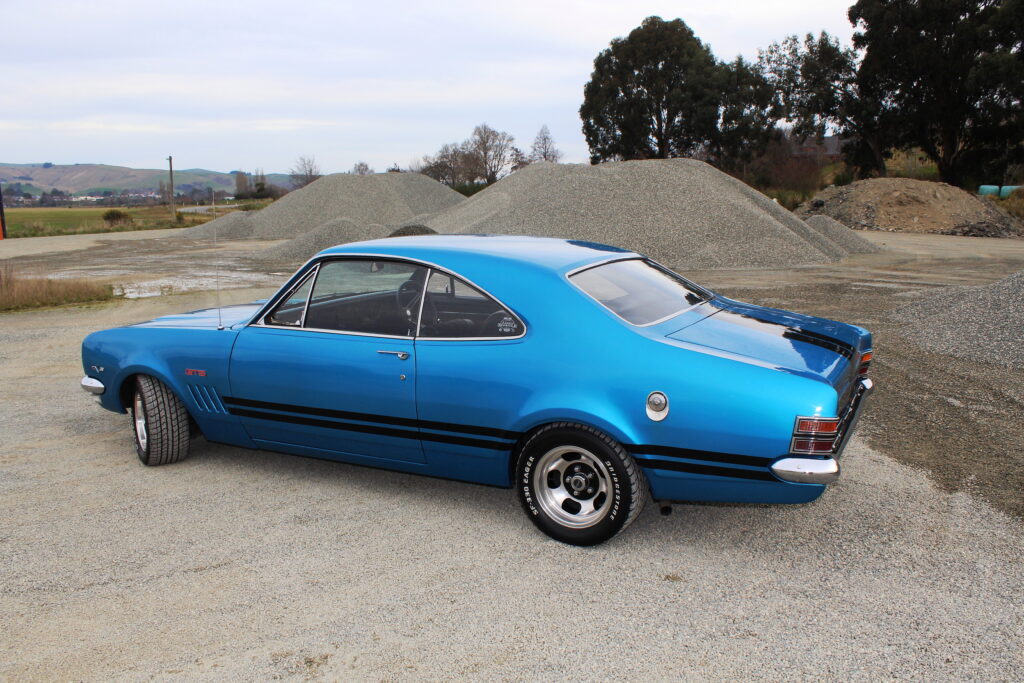
Reliable motoring
During the past 12 years, the Monaro has provided reliable motoring and it has taken little work to keep it in pristine condition. Derek remains very pleased with his decision to buy the car and enjoys driving it. Adding the bigger engine and a new transmission along with discrete upgrades for modern conditions have added to the Aysons’ enjoyment and, as the mechanical work was completed to a high standard, they can be confident the car is also safer.
“Apart from some minor repair work recently completed by Quintin Smith at South Otago Customs, the Dulon Monza Blue paintwork [factory colour] still looks as good today as it did when it was first painted,” Derek says.
“The engine is a fully rebuilt 350 Chev with a Saginaw four-speed manual gearbox and a 10-bolt diff using Commodore tubes and axles and disc brakes all round. Mike Verdoner from MV Motors (Balclutha) completed all the engine and mechanical work to an exceptionally high standard, as did all the other businesses mentioned.
“The interior was fully replaced by John Gold at Golds Upholstery in Balclutha with black vinyl in the exact same style as was period for this car.”
The spacious interior with big seats goes a long way to making these big Aussie coupes such enjoyable cruisers.
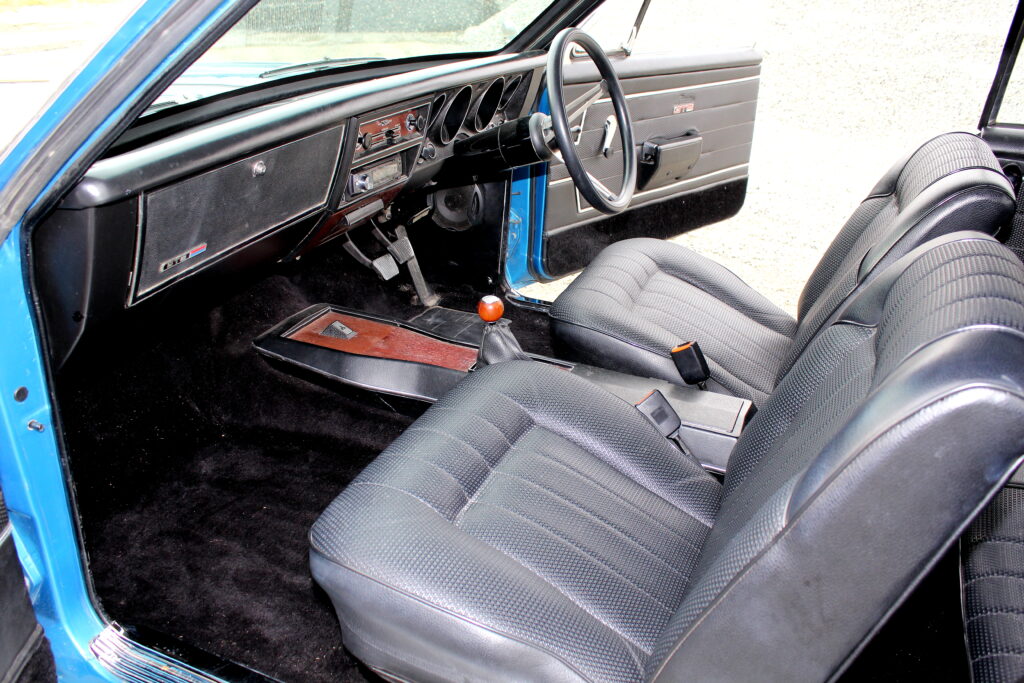


Factory spec
The 14×8 Tridents alloys with 245/50 Bridgestone Eager tyres are a popular choice, often retro-fitted to many Holden and Fords in Southland. This one sits nicely on the road and the classic wheel choice gives it a touch more of an aggressive stance, enhancing this model’s distinctive ‘take me to the track’ look.
Cruises were curtailed by Covid last year but, as the summer the events calendar has opened back up, Derek, a former president and now committee member of the Southern Aussie Muscle Car Club, based in Gore, expects to be doing more cruising in company.
“We enjoy getting the car out for a run as well as using it for weddings and school balls when time allows. Even though it originated as a factory GTS, with the Monza Blue paintwork already in pristine condition our intention was to complete this car [to the way] it would have rolled out of the factory in 1970 as an HT 350 Monaro GTS. I think it is pretty close to that – apart from the wheels, obviously.”
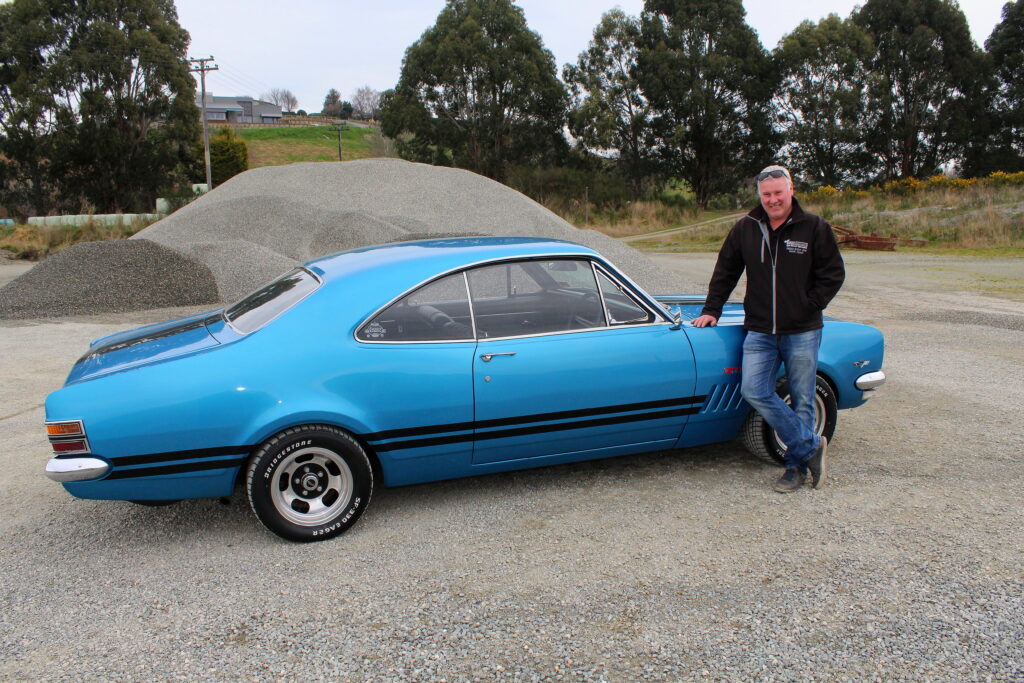
HOLDEN MONARO HT GTS 350 SPECIFICATIONS
Engine: Cast-iron small-block, five main bearings, 90-degree 350 cu. in. V8 with a 10.25:1 compression, single Rochester Quadrajet carburettor
Bore & stroke: 43″ (101.6mm) x 3.48″ (88.4mm) for 5733cc
Power: 304PS/300bhp (224kW) @ 4800rpm
Torque: 380lb·ft (224kW) @ 3200rpm
Gearbox: Four-speed Saginaw manual
Brakes: Power-assisted ventilated discs front and drums rear
Body: Two-door 5-seater
Length: 184.8″ (4694mm)
Width: 71.8″ (1824mm)
Height: 54.9″ (1394mm)
Wheelbase: 111″ (2819mm)
Track: 58.4″ (1483mm)
Wheels/ tyres: 6.0JJ x 14, D70 H14 tyres (feature car: 14 x 8 Trident alloy wheels, 245/50 Bridgestone Eager tyres)
Final drive: 3.36:1 (optional: 3.08:1, 3.55:1)
Performance: 125mph (202kph)
Standing quarter: 15.6 sec
Numbers built: 14,437 units
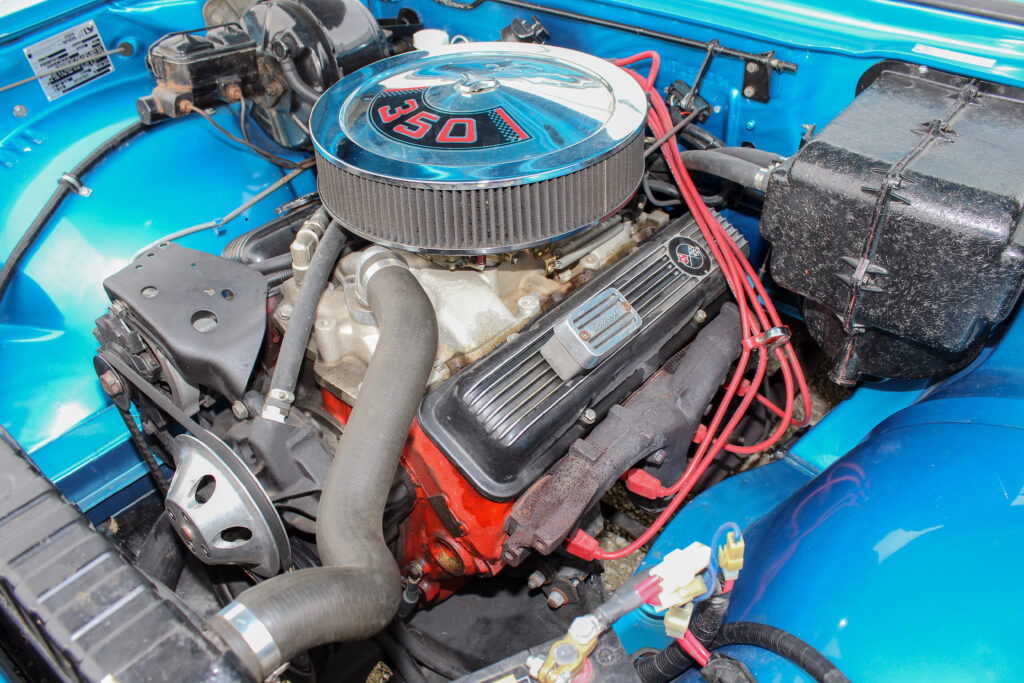
SOUTHERN AUSSIE MUSCLE CAR CLUB
Formed in 2007 in Gore, the Southern Aussie Muscle Car Club draws membership from the lower South Island. Club members often take their Fords, Holdens, and Chryslers to events, car shows, shed raids, and runs as far as Kaikoura and Christchurch. Its Aussie Muscle Car Mania Show is held annually in April.
Head here to get more info on the club
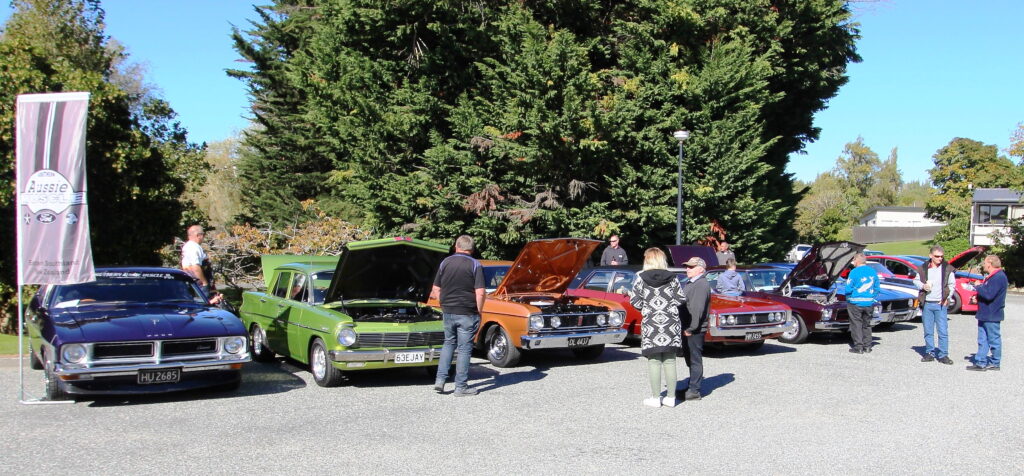
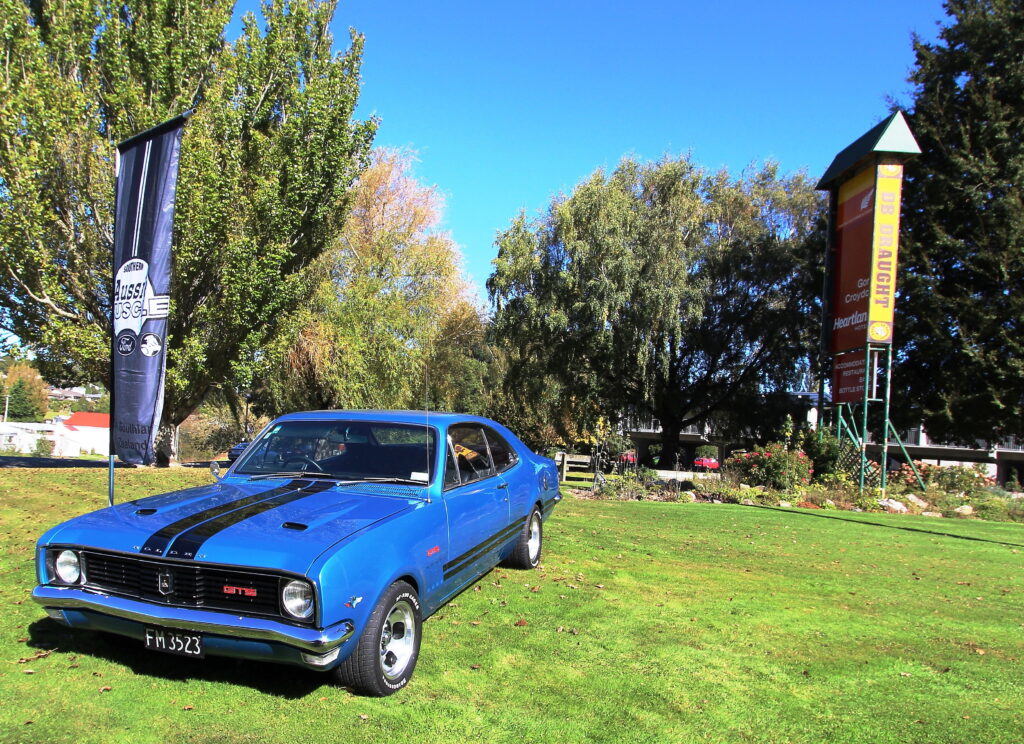

HOLDEN MONARO HT HISTORY
Holden was on a sales roll in 1968, with its up-to-the-minute Monaro coupe influenced by US style thanks to a big hand in the design team from the GM stylists assigned to Holden for the early clay designs. Introduced by the HK model, the Monaro came with a huge list of options. It was a big change for GM-Holden (GMH)to offer myriad options and it marked a turning point for the company. The HT Monaro — introduced in June 1969 — sought to address some of the performance issues of the HK Monaro — Ford had thrown down the racing gauntlet with its XW Falcon GTHO Phase 1 earlier that year. At the same time the Monaro gained a small facelift and detail changes for its popular series production racing coupe.
The big news under the bonnet was proclaimed with new badges on the flanks announcing the Monaro was now a GTS350 with the addition of Chevrolet’s 350 cu. in. (5.7-litre) V8. Gone, too, was Chevrolet’s 5-litre V8, replaced by Holden’s own 308 cu. in. (5-litre) V8 along with a smaller Holden V8: the 253 cu. in. (4.2-litre). A two-speed Powerglide automatic transmission was offered throughout the range until the local new three-speed Trimatic transmission became available for the two smaller V8s, with the Powerglide staying as the option for the 350 engine.
Detail differences were changes to the rear tail lights and indicator units, which were larger and now wrapped around the mudguard edges, a plastic front grille instead of the HK’s steel one, a change to the location of the tachometer/speedometer, and an option of body stripes and fake bonnet scoops. Front suspension bushes were now rubber instead of bronze.
This was also the year former Ford works team boss Harry Firth was enticed across the fence to GMH to run the Holden Dealer Team (HDT), thus beginning a mighty motor racing legacy. HDT entered three Monaro GTS350s in the Hardie-Ferodo 500 that year, and the car driven by Colin Bond and Tony Roberts took line honours ahead of the Bruce McPhee and Barry Mulholland Ford Falcon GTHO. Third was another HDT Monaro driven by Des West and a young, soon to be legend Peter Brock.
HDT had more success in 1970 with a win at the Surfers Paradise 12-hour race by the Bond and Roberts Monaro but the real star was privateer Norm Beechey, who had changed to an HT Monaro for the season and, with three wins from seven rounds, secured Holden’s first-ever Australian Touring Car championship title. Beechey’s special engine had been bored out to six litres and, with 500bhp (410kW), made a decisive impact on motor racing in the series.
Motor racing does impact on sales and nowhere was that more evident than with the big Monaro coupes and the Fords. Beechey raced the Monaro for another two seasons but the writing was on the wall for the big cars. With CAMS taking on board the supercar speed hysteria and changing the rules for Group C, the Monaro was ineligible. Production of the HT Monaro concluded in July 1970 and it was replaced by the HG Monaro until July 1971.
